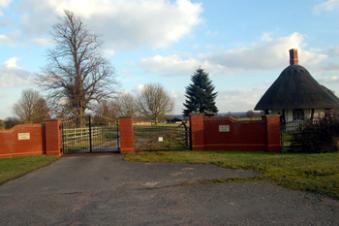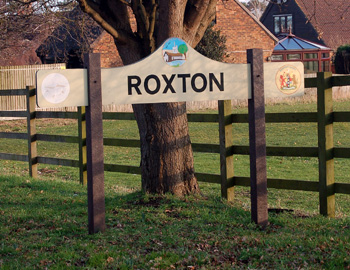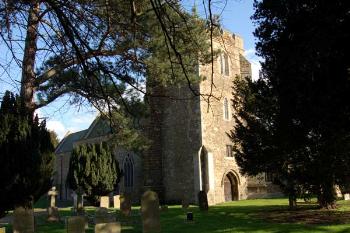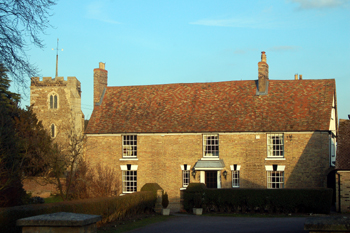The Parish of Roxton in General

Roxton Park March 2010
Landscape
Roxton was, before 1st April 2007, an extensive parish. Volume III of The Victoria County History for Bedfordshire was published in 1912, before the addition of Wyboston in 1965 (which had previously been in Eaton Socon). In 1912 the parish comprised 2,918 acres. The chief crops were wheat, barley, oats and beans.
The village of Roxton was in the extreme south-east of the parish which is low lying. The church, for example, stands at about 80 feet above sea-level and the river is just under 60 feet.
The solid, or underlying, geology is a mudstone called Oxford Clay Formation. It was laid down between 154 and 164 million years ago in the warm, shallow seas of the Jurassic Period. The superficial geology comprises a mixture of clay, sand, silt and gravel, being alluvium along the river and coarser river terrace deposits beyond. To the west and south of the village is a diamicton laid down by glaciers in the Ice Ages of the mid-Pleistocene Epoch.

Roxton sign March 2010
Place Name
Roxton was first recorded in the Domesday Book of 1086 and the name means "rook hill", from the Old English hroc, meaning rook, and dun, a hill. It first appeared in its modern form in 1449 and had undergone a number of variations:
- Rochestone: 1086;
- Rochesdone: 1086;
- Rokesdun: 1220-1247;
- Rokesdon: 1227-1500;
- Rokesden: 1232-1300;
- Rokisdun: 1235;
- Rockesden: 1287;
- Rockesdon: 1297-1338;
- Rokkesdon: 1297-1338;
- Rokeston: 1398;
- Rokesdon: 1449.

Roxton Church March 2007
Administrative History
Roxton is an ancient parish in the Barford Hundred. It was formerly bordered by the ancient parish of Eaton Socon to the north, this became the civil parish of Staploe in 1965 when the town of Eaton Socon was moved into Huntingdonshire (now Cambridgeshire). The parish was bordered to the north-west by Colmworth, to the west by Wilden, to the south by Great Barford and Blunham and to the east by Tempsford.
The ancient parish included the hamlets of Chawston, which lies due north and Colesden which lies north-west of the village of Roxton. Wyboston, as noted above, was added in 1965 and lies north-east of Roxton, partly along the Great North Road, the modern A1. On 1st April 2007, however, these three hamlets became a separate civil parish known as Wyboston, Chawston and Colesden. This drastically reduced the size of the parish of Roxton to about a quarter of its former size. The modern civil parish is bordered to the east by Tempsford, to the south by Blunham and Great Barford and to the north and west by Wyboston, Chawston and Colesden. The boundary remains the Great Ouse in the east and much of the south of the parish but the new border to the west and part of the north is the carriageway of the A421.

Church Farm March 2010
Population
Seventeen men are noted in Roxton in the Domesday Book of 1086. This figure has to be multiplied by a factor of at least four to account for their dependents, giving an estimated population of around 70. More modern population statistics are as follows:
- 1801: 465;
- 1811: 445;
- 1821: 537;
- 1831: 575;
- 1841: 594;
- 1851: 622;
- 1861: 688;
- 1871: 596;
- 1881: 551;
- 1891: 441;
- 1901: 349;
- 1911: 396;
- 1921: 440;
- 1931: 449;
- 1951: 607;
- 1961: 598;
- 1971: 1,098;
- 1981: 1,219;
- 1991: 1,264;
- 2001: 1,271;
- 2011: 348.
The dramatic drop in population figures between 2001 and 2011 is accounted for by the creation of the civil parish of Wyboston, Chawston and Colesden in 2007.